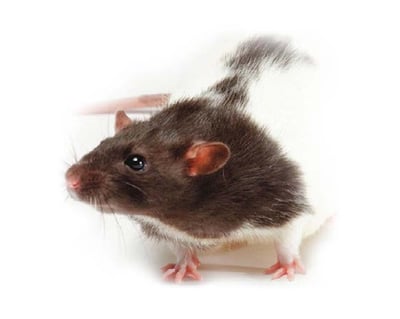Lrrk2 knockout rats
HsdSage:LE-Lrrkem1Sage

Strain
Location
Order Today
Typically heterozygous rats are cryo-recovered in 10-12 weeks to an age of 7 weeks old. Subsequently homozygous rats to an age of 7 weeks old can be produced within 20-22 weeks.
- Background strain: Long Evans Hooded
- Homozygous knockout rats exhibit complete loss of target protein as demonstrated by Western blot
- Lrrk2 knockout rats are significantly larger than wild type controls
- Lrrk2 knockout rats display dark kidneys, similar to observations made in Lrrk2 knockout mice
Availability: Cryopreserved as heterozygous embryos
Zygosity genotype: Homozygous as live colony
Developed in collaboration with The Michael J. Fox Foundation, this model contains a deletion of the Lrrk2 gene, encoding for the leucine-rich repeat kinase 2. Mutations in Lrrk2 are the most common monogenic cause of Parkinson's disease. This model is useful in understanding Lrrk2 biology.
Lrrk2 mutations account for 5-6% of familial Parkinson's dieases and 1-3% in sporadic PD. Collectively, these mutations result in the most common cause of PD, making this an important model for the study of Parkinson's disease.
Origin:
The Lrrk2 KO rat model was originally created at SAGE Labs, Inc. in St. Louis, MO and distributed out of the Boyertown, PA facility. The line continues to be maintained through the original SAGE Labs animal inventory acquired by Envigo, then Envigo was acquired by Inotiv in 2021.

Available regions:
For pricing information, please contact us using the phone number above.

Research use and related publications
- Neuroscience
- Other
- Parkinson's disease
- Neuronal apoptosis





